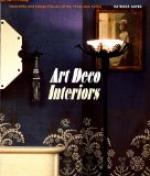Having settled upon a type of furniture, turn your attention to the walls. Always let the location of your room decide the colour of its walls. The room with a sunny exposure may have any colour you like, warm or cold, but your north room or any room more or less sunless, requires the warm, sun-producing yellows, pinks, apple-greens, beige and wood-colours, never the cold colours, such as greys, mauves, violets and blues, unless in combination with the warm tones. If it is your intention to hang pictures on the walls, use plain papers. Remember you must never put a spot on a spot! The colour of your walls once established, keep in mind two things: that to be agreeable to the artistic eye your ceilings must be lighter than your sidewalls, and your floors darker. Broadly speaking, it is Nature’s own arrangement, green trees and hillsides, the sky above, and the dark earth beneath our feet. A ceiling, if lighter in tone than the walls, gives a sense of airiness to a room. Floors, whether of exposed wood, completely carpeted, or covered by rugs, must be enough darker than your sidewalls to “hold down your room,” as the decorators say.
If colour is to play a conspicuous part, brightly figured silks and cretonnes being used for hangings and upholstery, the floor covering should be indefinite both as to colour and design. On the other hand, when rugs or carpets are of a definite design in pronounced colours, particularly if you are arranging a living-room, make your walls, draperies and chair-covers plain, and observe great restraint in the use of colour. Those who work with them know that there is no such thing as an ugly colour, for all colours are beautiful. Whether a colour makes a beautiful or an ugly effect depends entirely upon its juxtaposition to other tones. How well French milliners and dressmakers understand this! To make the point quite clear, let us take magenta. Used alone, nothing has more style, more beautiful distinction, but in wrong combination magenta can be amazingly, depressingly ugly. Magenta with blue is ravishing, beautiful in the subtle way old tapestries are: it touches the imagination whenever that combination is found.
PLATE VI
The table is modern,
but made on the lines of a refectory table,
well suited in length,
width and solidity for board meetings,
etc.
The chairs are Italian in style.
[Illustration: Another View of the Same Office]
We grow up to, into, and out of colour schemes. Each of the Seven Ages of Man has its appropriate setting in colour as in line. One learns the dexterous manipulation of colour from furnishing, as an artist learns from painting.




